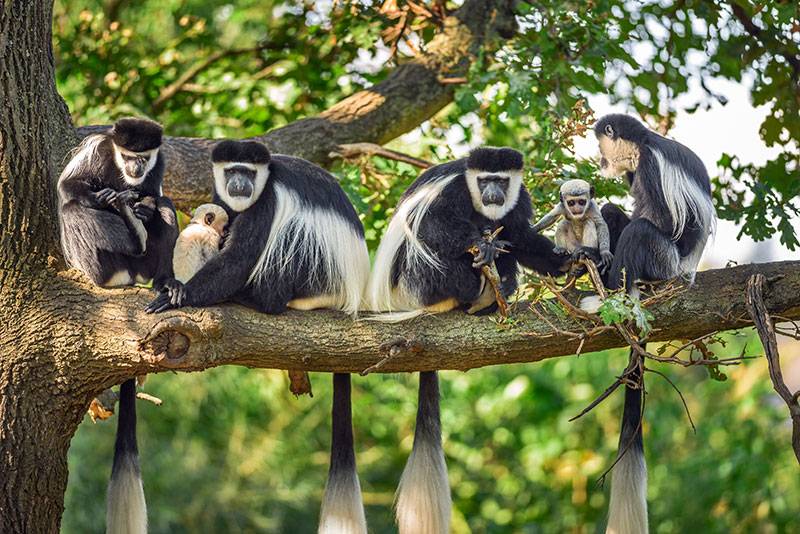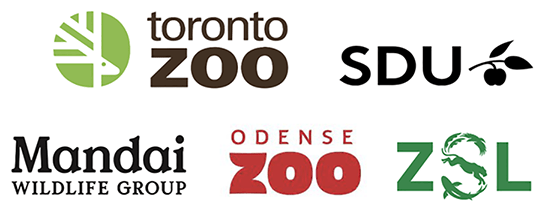The May 6 United Nations report says extinction rates are accelerating faster than previously anticipated. Research published earlier this month shows one way global conservation scientists are improving how they assess how long a species will survive.
Until recently, predicting species extinctions required a lot of guesswork. A paper published in the journal Proceedings of the National Academy of Sciences (PNAS) reveals that critical information, such as fertility and survival rates, has been missing or unavailable for more than 98 percent of known species of mammals, birds, reptiles, and amphibians.
This gap has far-reaching implications for conservationists seeking to blunt the impact of mass extinctions. IUCN Species Survival Commission scientists, Convention on International Trade in Endangered Species of Flora and Fauna (CITES), TRAFFIC, Monitor, and others tasked with saving thousands of species require comprehensive data on which to make informed decisions.
“It seems inconceivable, yet experts central to sustaining biodiversity of life regularly encounter a disappointing lack of data. To compensate, scientists power through with best-guess assumptions,” said lead researcher and Species360 Conservation Science Alliance director Dalia A. Conde.
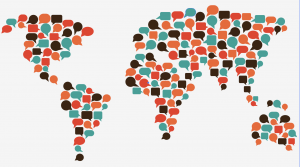
A multidisciplinary team led by Conde and researchers from the Interdisciplinary Center on Population Dynamics, Oxford, the Max Planck Institute for Demographic Research, the University of Southern Denmark, and Species360 Conservation Science Alliance, alongside more than 19 other academic institutions, believes we can substantially increase what we know by applying robust analytics to data long overlooked.
Predicting when species are at risk, and how best to bolster populations, requires knowing when females reproduce, how many infants or hatchlings will survive to adolescence, and how long adults live. To understand what data are currently available, and measure the void, the team developed a Species Knowledge Index (SKI) that classifies demographic information for 32,144 tetrapods, or species of mammals, birds, reptiles and amphibians.
“The index provides significant information that, in conjunction with genetic data, allows estimations of events that affect population viability. Severe population declines, sometimes called genetic bottlenecks, influence the sustainability of populations, as we have found in studying endangered rhinos,” said Oliver Ryder, Ph.D., Director of Conservation Genetics, San Diego Zoo Global.
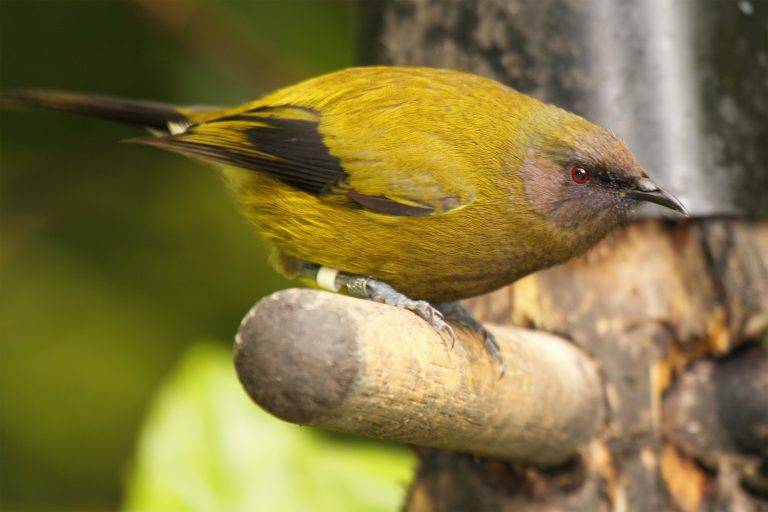
Using go-to global sources of information, the index registers comprehensive birth and death rates for just 1.3 % of these major classes of species. A map, which illustrates the demographic knowledge available for all tetrapod classes, shows that many remain largely blank.
That changes when Conservation Science Alliance researchers add a previously untapped source, the Zoological Information Management System (ZIMS). By inviting ZIMS to the party, the Species Knowledge Index gains an eightfold increase for comprehensive life table data used to assess populations.
“Adding ZIMS was like turning on the lights in an otherwise very dim room,” said lead researcher and Conservation Science Alliance director Dalia A. Conde. “Class by class, from mammals through amphibians, we saw large blank spaces fill with points representing usable data.”
ZIMS is curated by wildlife professionals working within zoos, aquariums, refuge, research, and education centers in 97 countries. It is maintained by Species360, a non-profit member-driven organization that facilitates information sharing among its nearly 1,200 institutional members, and is the world’s largest set of wildlife data.
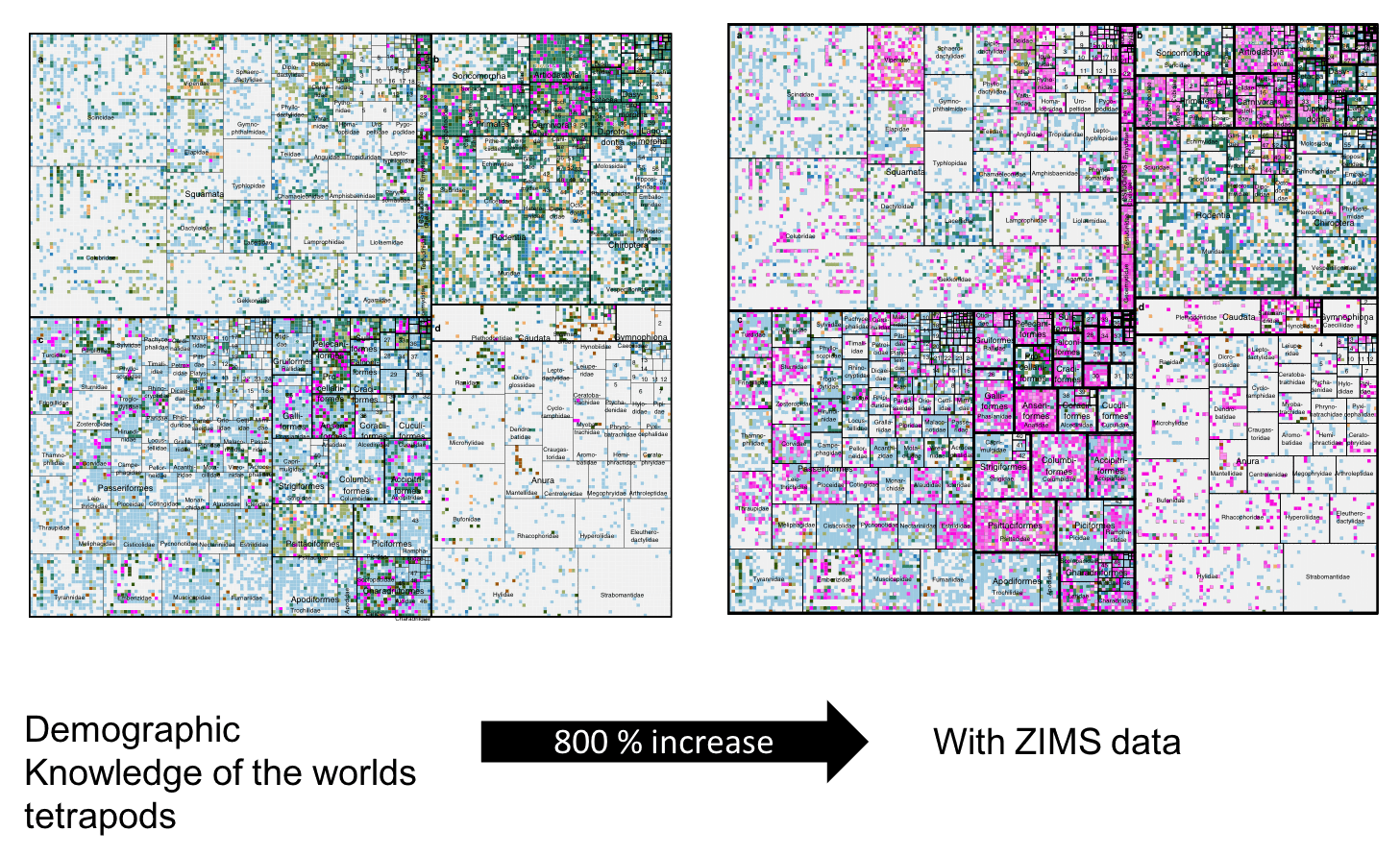
The study, “Data gaps and opportunities for comparative and conservation biology,” suggests a value far beyond the data itself. As Conservation Science Alliance and other researchers apply analytics to data aggregated across global sources, including ZIMS, they glean insights that impact outcomes for species in danger of extinction. Moreover, this can provide key insights for comparative and evolutionary biology, such as understanding the evolution of aging.
Demographic Species Knowledge Index
A multidisciplinary team of 33 scientist including data analysts, biologists, and population dynamics researchers developed the Species Knowledge Index to map just how much we know about species worldwide. The first, the Demographic Species Knowledge Index, aggregates, analyzes and maps data from 22 databases and the IUCN Red List Red List of Threatened species.
About the Study
The paper published in Proceedings of National Academy of Sciences is led by Dalia A. Conde, Director of the Species360 Conservation Science Alliance, member of the IUCN Species Survival Commission’s Conservation Planning Specialist Group.

OPEN DATA Research: This study, published April 15, 2019, in journal “Proceedings of the National Academy of Sciences,” was conducted with support of Conservation Science Alliance founding partners the World Association of Zoos and Aquariums(WAZA), Wildlife Reserves Singapore (WRS), and Copenhagen Zoo. The research is part of a shared commitment to answer the need for better insight to wildlife, by making breakthrough analysis of wildlife available to the global scientific community. Researchers from Interdisciplinary Center on Population Dynamics, Oxford, the Max Planck Institute for Demographic Research, the University of Southern Denmark, and Species360 Conservation Science Alliance, with participants from 19 institutions, conducted the research by analyzing data aggregated across global sources including IUCN Red List, ZIMS, and more. Download the paper at PNAS. Hear the impact of this research for species conservation experts (Video). Download the OPEN DATA results here.
